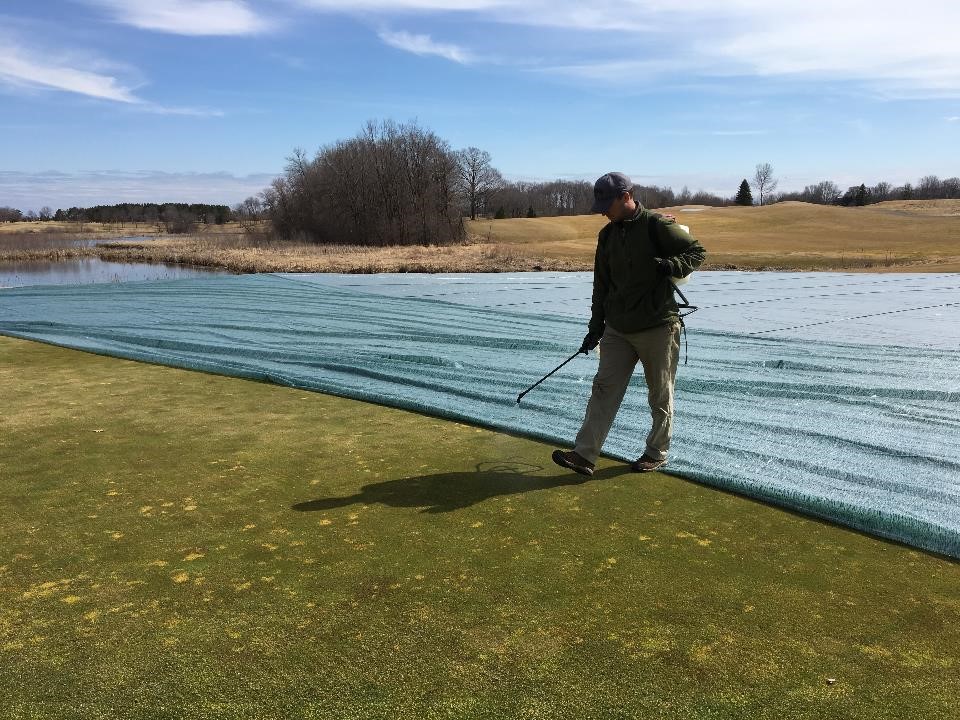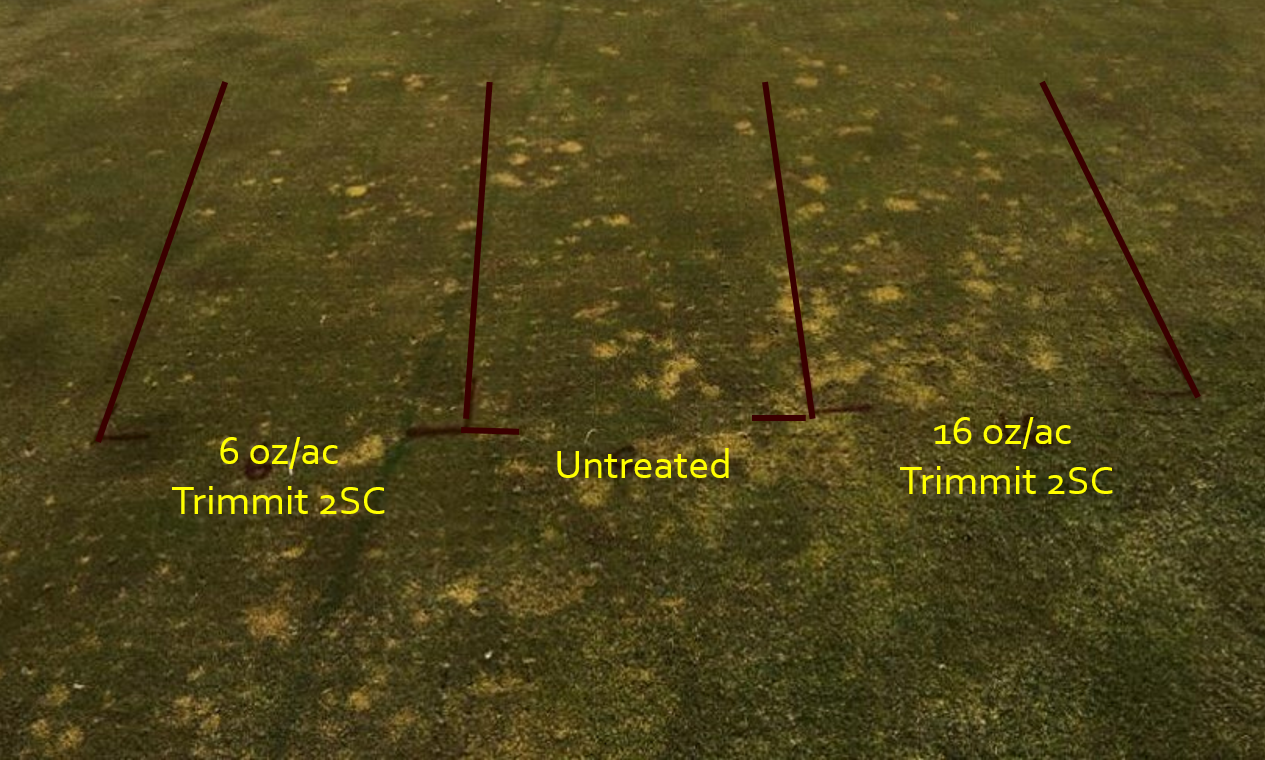Paclobutrazol is a plant growth regulator used to inhibit annual bluegrass (Poa annua) growth. This suppression makes the desirable turfgrasses more competitive, allowing them to crowd out the weedy annual bluegrass.
When warm February weather occurs in Minnesota, it can cause damage to annual bluegrass. We partnered with a MGCSA member to investigate whether warm February temperatures, in combination with an application of paclobutrazol, would give us the opportunity to push annual bluegrass over the edge and eliminate it from putting surfaces.
Research questions
Will paclobutrazol be taken up by annual bluegrass roots at this time of year? Are there any negative consequences to the desirable grass (creeping bentgrass)?
Hypothesis
Higher paclobutrazol rates will result in a greater reduction in annual bluegrass populations.
Study location
Rush Creek Golf Club (Superintendent – Dale Hibert, Assistant Superintendent – Matt Cavanaugh)
- 6 oz/ac of Trimmit 2SC
- 16 oz/ac of Trimmit 2SC
- Untreated plot (control)
Results
- Little influence on growth of either annual bluegrass or creeping bentgrass
- Likely too cold for uptake
Takeaway
Based on these results, we would not recommend a very early spring application of paclobutrazol in Minnesota. We suggest to delaying spring PGR applications such as paclobutrazol until growth is initiated.
Contact Maggie Reiter, Extension Educator - Turfgrass <[email protected]> for more information on this program.

